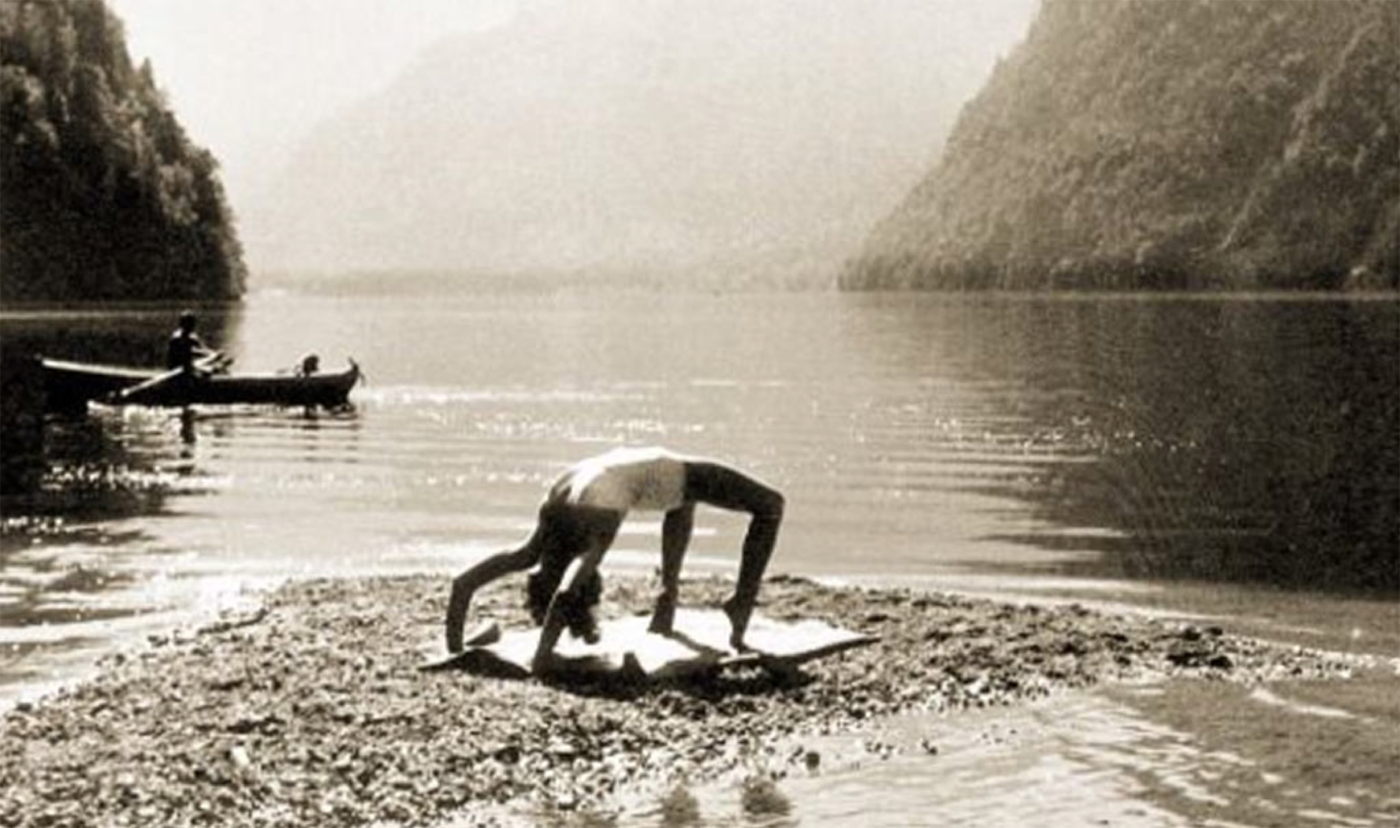Is Yoga Cultural Appropriation? (2-PART SERIES)
Photo by Ksenia_Makagonova/Unsplash
By Phillipa Beck
A couple of weeks ago a kindergarten class came to my yoga studio. I asked them what they knew about yoga, and one little boy jumped back into a wiggling, barking downward dog. Another five-year-old tried to touch her toes.
Neither of these poses is in the first yoga text. Nor are handstand, arm balances or the flowing, sweaty sun salutations.
The earliest yoga document appeared in India somewhere between 1,800 and 2,500 years ago, a time that roughly overlaps the life of Buddha. Patanjali’s Yoga Sutras suggests we should practice with a “steady, comfortable” seat, but there’s no description of physical poses (asana) the way we do them today.
The sutras are a study of human consciousness. They emphasize turning our attention inward, learning what our true nature is about and sustaining ourselves in ways that have nothing to do with material possessions. Four short chapters outline an “eight-limbed path” a person can take to moksha or liberation. First come ethical restraints—like non-violence, truth and cultivating happiness—then asana, then breathing practices, developing concentration and focus, meditation and, finally, merging with the infinite.
More details for asana show up 1,200 years later, in tantric-inspired texts like the Hatha Yoga Pradipika. But even there you don’t see the hundreds of poses that today we associate with yoga. There are instructions for cleansing the nasal passages, techniques for channeling energy, but only 15 asana. All but one are seated postures.
The yoga that millions of people around the globe practise today is mainly a body-based, physical endeavour. How did we get here from there? It’s a fascinating story and not what you might expect.
Yoga and cultural appropriation
One perspective is that an ancient practice from a developing country has been gutted through cultural appropriation—the process of taking something traditional from a marginalized group and turning it into something that profits the dominant group.
No doubt about it, we have developed an extensive yoga industrial complex, or YIC, as it is called by New Zealand yoga teachers’ teacher Mark Whitwell.
The profits are massive—more than $10 billion in the US last year—writes Stewart Lawrence in his article Who Owns Online Yoga. And now we have internet gems like Why Be Zen When You Can Be Fabulous, Twerking Yoga and It Ain’t Your Momma’s Yoga, the work of a professional WWF wrestler who took all the “spiritual mumbo jumbo” out.
Defining and selling yoga as a solely physical practice relies on racist thinking, legitimizing what Western people like about yoga and invalidating its original meaning, maintain US social justice activists Shreena Ghandi and Lillie Wolff.
In their article Yoga and the Roots of Cultural Appropriation, they explain: “People are grasping for something to belong and connect to outside of the empty and shallow societal anchors of materialism and consumerism, which do not nourish or empower people in any sort of meaningful or sustainable way. People are searching for these things without even understanding why there is a void in the first place. Few white people make the connection between their attraction to yoga and the cultural loss their ancestors and relatives experienced when they bought into white dominant culture in order to access resources.”
We’ve seen similar discussions in Canada. In 2015, the Student Federation at the University of Ottawa bowed to a complaint of cultural appropriation and cancelled a free yoga class that had been running at the Centre for Students with Disabilities for seven years.
Their solution, reported the CBC, was to reinstate the class a semester later, replacing the Caucasian instructor with a teacher of south-Indian descent.
Evil yogis
Capitalists aren’t the only culture to grab what they like from yoga. In his article Evil Yogis? The Ultimate Oxymoron, author Dave Romanelli documents that as the Nazis gained strength, a yoga boom hit Germany.
Berlin’s first yoga studio opened in 1937. Books about yoga proliferated, and there were yoga students in 50 German towns and cities. Hitler’s wife, Eva Braun, practised yoga, and Romanelli has dug up a stunning, sunlit photo of her beside a lake in full urdhva dhanurasana (backbend) that could grace the cover of any modern magazine.

Eva Braun getting away from it all at Hitler’s mountain vacation home, Berghof.
Hitler was an avid student of yoga and Indian mysticism.
The swastika, perhaps 12,000 years old, had been used by many cultures throughout history, including Hindus as a symbol for auspiciousness and Buddhists to symbolize the footprints of Buddha. Hitler simply reversed the direction of the spokes and claimed it for the Aryan nation.
Rather than trying to get cash from the ancient practices, the Nazis focused on yoga philosophy to justify their actions.
“(Heinrich) Himmler’s attitude to ‘karma’ was never better displayed than at the speech he made to senior S.S. men at Poznan in 1943,” Romanelli says, “when he spoke of the noble, virtuous work his butchers were performing in eliminating the Jews of Europe and Russia.”
Is there authentic asana?
The debate about cultural appropriation assumes that the shapes we bend into arrived intact from an ancient past.
Mark Singleton’s book Yoga Body: The Origins of Modern Posture Practice rocked the yoga world when it was published in 2010. It maintains there’s little evidence in ancient India of the de-stressing, relaxation-oriented yoga we do now.
In the 1700s and 1800s, much of physical yoga in India was linked to resisting colonialism.
“Militant yogis trained in order to control the trade routes across northern India, becoming so powerful they were able to challenge the East India Company,” Singleton writes. “All lineages engaged in exercise routines designed to inure their bodies to the harsh physical conditions … and prepare them for combat.”
When British rule in India (1858-1947) officially arrived, many cultural practices were outlawed and vilified, as they were in Canada and colonies around the globe. It became an offence to wander naked or carry a weapon, two marks of the yogi. Yoga-buffed mercenaries were demilitarized and forced to resettle. Until the early 1900s, displaced Hatha yogis were beggars and street-level contortionists, disdained for their “occult practices,” Singleton says.
“We have nothing to do with (Hatha yoga) here, because its practices are very difficult and cannot be learnt in a day and, after all, do not lead to much spiritual growth,” explained Swami Vivekananda, who addressed the World Parliament of Religions in Chicago in 1893.
It wasn’t until well into the 20th century that attitudes began to shift and yoga was transformed into a wholesome, accessible regime for health and well-being which could be practised by ordinary people.
Who is appropriating from whom?
In the early 1900s, a worldwide body fitness craze, fuelled by illustrated magazines, met a wave of body-positive nationalism that was surging through India.
Scandinavian keep-fit gymnastics drills were introduced throughout India’s school system and military training. European body builders commanded huge audiences when they toured the subcontinent. The maharaja of Mysore, in southwestern India, promoted physical education with zeal.
Into all this, in 1933, a small man from a remote village began teaching at a state-of-the-art yogasala, in Mysore’s Jaganmohan Palace.
Krishnamacharya (1888-1989) was descended from the 9th century sage Nathamuni; he’d been initiated into yoga by his father at the age of five. With support from the Maharaja, Krishnamacharya staged public yoga demonstrations, lectured, toured and dramatically re-popularized yoga.
Krishnamacharya was drawn to the physical training that was happening at the palace, Singleton says. He’d inherited the old gymnastics hall with its apparatus, pulleys, ropes and props, and would debrief with the body-building teacher after class.
Krishnamacharya’s students (and other teachers from India) absorbed the knowledge of ancient practices, absorbed the European and American body focus, and then travelled to the west to popularize yoga as we now recognize it.
Pattabhi Jois, who met Krishnamacharya when he was a young man, learned the athletic, callisthenic approach we associate with vinyasa and power yoga. Next came Iyengar, who had been a sickly child. His is a slower physical practice that uses props for precision and alignment. Desikachar, Krishnamacharya’s son, focused on personalized yoga, which has inspired yoga therapy. Krishnamacharya initially refused to teach one of his most widely travelled protégés, Indira Devi, because she was female. But she persisted, and wound up spreading the word about yoga in Russia, South America, America and Europe.
These days the venerated Krishnamacharya, who died at age 100, is part of another debate in the yoga world about appropriation.
He always maintained that the sun salutation system he pioneered came from a 5,000-year-old text called the Yoga Kurunta. Unfortunately, the palm-leaf document has been eaten by ants and no copies have been found. Mark Singleton spends a chunk of his book demonstrating how the flowing, athletic sequence looks just like a gymnastics leaflet that was circulating in Mysore.
So what is yoga?
Yoga is not frozen in time. It’s a practice that has evolved and adapted in many countries over thousands of years.
“With culture, change is the one constant,” says anthropologist Wade Davis, Explorer in Residence at the National Geographic Society. “We can’t preserve the ecosystem of the mind.”
Original yoga didn’t look like my Kid Yoga class. Is it cultural appropriation when we put our hands together and say “namaste” at the end? I don’t think so. It’s my way of paying homage to a great tradition.
I think an authentic practice contains the gem that has stayed true to yoga through all these years. It asks the question, What does it mean to be human and alive? How can we recognize our own light, stay centred and balanced and positive, so we can pass it along to others?
We can explore that through the body. And we can remember there are more stages to the journey.
Up next: In our Power issue, Phillipa Beck looks at the making of a guru and power’s ability to corrupt. Read her article, Power and Prana: When Yoga Leads to Abuse, here.
Phillipa Beck owns Full Circle Yoga and a B&B in northern BC. She teaches yoga class, runs silent backcountry retreats, and hosts the Sip & Stretch Series: Wine Tasting, Beer Tasting, and Tea Tasting with Yoga.



